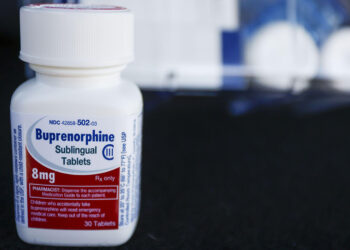TOPLINE:
The prevalence of cerebral small vessel disease (CSVD) nearly doubled over 7.5 years in neurologically asymptomatic patients with type 1 diabetes (T1D). The progression of cerebral microbleeds (CMBs), one of the manifestations of CSVD, was associated with baseline systolic blood pressure and A1c among other factors, while the progression of white matter hyperintensities was only associated with age.
METHODOLOGY:
- CSVD is highly prevalent among middle-aged individuals with T1D, often progressing without overt neurological symptoms.
- Researchers investigated the potential rate of progression of CSVD in 172 patients with T1D (median age, 40.6 years; 55% women; median diabetes duration, 21.8 years) who showed no signs or symptoms of neurologic or cardiovascular disease or any contraindications to MRI.
- Baseline assessments included systolic blood pressure, anthropometrics, medical history, lifestyle, A1c levels, albuminuria, and diabetic retinopathy.
- Participants underwent brain MRI scans within a year of clinical assessments at baseline (2011-2017) and at the follow-up phase (2019-2022). The scans were evaluated for CMBs, white matter hyperintensities, and infarcts.
TAKEAWAY:
- Over a period of 7.5 years, the prevalence of any CSVD marker increased from 36% to 70%, as did the prevalence of CMBs (from 17% to 33%) and that of at least two white matter hyperintensities (from 23% to 63%; P < .001 for all).
- Baseline A1c (adjusted odds ratio [aOR], 1.007; P = .006), systolic blood pressure (aOR, 1.005; P = .04), and number of CMBs at baseline (aOR, 1.01; P = .005) were associated with an increase in CMBs. Age was associated with an increase in CMBs only in patients who were diagnosed with T1D at less than 18 years of age (per 1-year increment: OR, 1.024; P < .001).
- The progression of CMBs was more commonly observed in patients with diabetic retinopathy and proliferative diabetic retinopathy at baseline than in those without these conditions (P = .004 and P = .01, respectively).
- Age was the only factor associated with the progression of white matter hyperintensities in patients with T1D (per 1-year increment: OR, 2.25; P = .002).
IN PRACTICE:
“The prevalence of CSVD nearly doubled in 7.5 years in middle-aged individuals with type 1 diabetes. The long-term clinical implications of the changes remain uncertain, and interventional studies are necessary to determine whether tighter control of blood pressure and glycemia can slow CMB progression,” the authors concluded.
SOURCE:
This study was led by Aleksi Tarkkonen of the University of Helsinki and Helsinki University Hospital, Helsinki, Finland. It was published online in Diabetes Care.
LIMITATIONS:
This study used different MRI scanners, could not measure the total volume of white matter hyperintensities, and lacked a control group for comparing the rates of progression of CSVD in patients with T1D with those of healthy control individuals without the condition.
DISCLOSURES:
This study was supported by grants from various sources such as the Folkhälsan Research Foundation, Wilhelm and Else Stockmann Foundation, Liv och Hälsa Society, and other sources. One author reported receiving support from Medical Society of Finland and Sigrid Jusélius Foundation and a grant from State Funding for University-level Health Research among others. Several authors reported being cofounders and shareholders, receiving honoraria, being on advisory boards, and having other ties with various healthcare and pharmaceutical companies.
This article was created using several editorial tools, including AI, as part of the process. Human editors reviewed this content before publication.
Source link : https://www.medscape.com/viewarticle/cerebral-small-vessel-disease-prevalence-rises-t1d-2025a10007mz?src=rss
Author :
Publish date : 2025-03-31 11:51:00
Copyright for syndicated content belongs to the linked Source.














